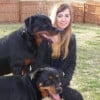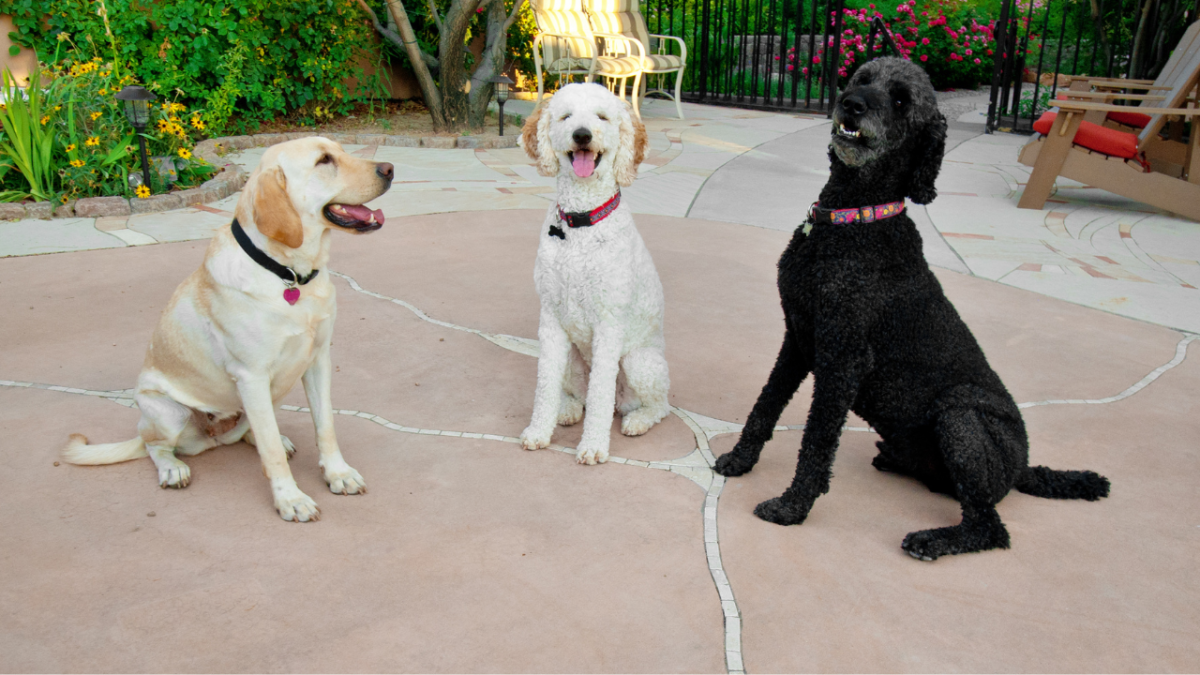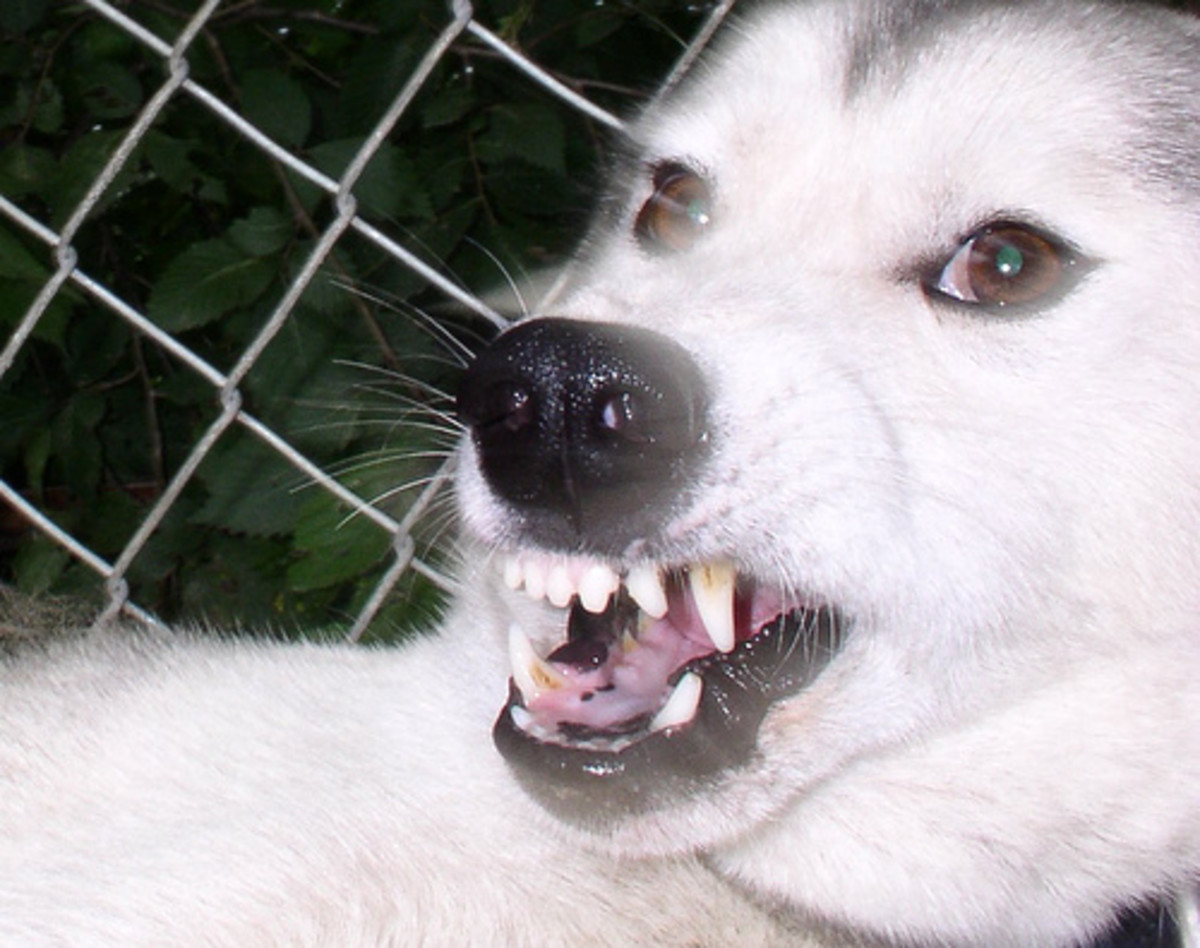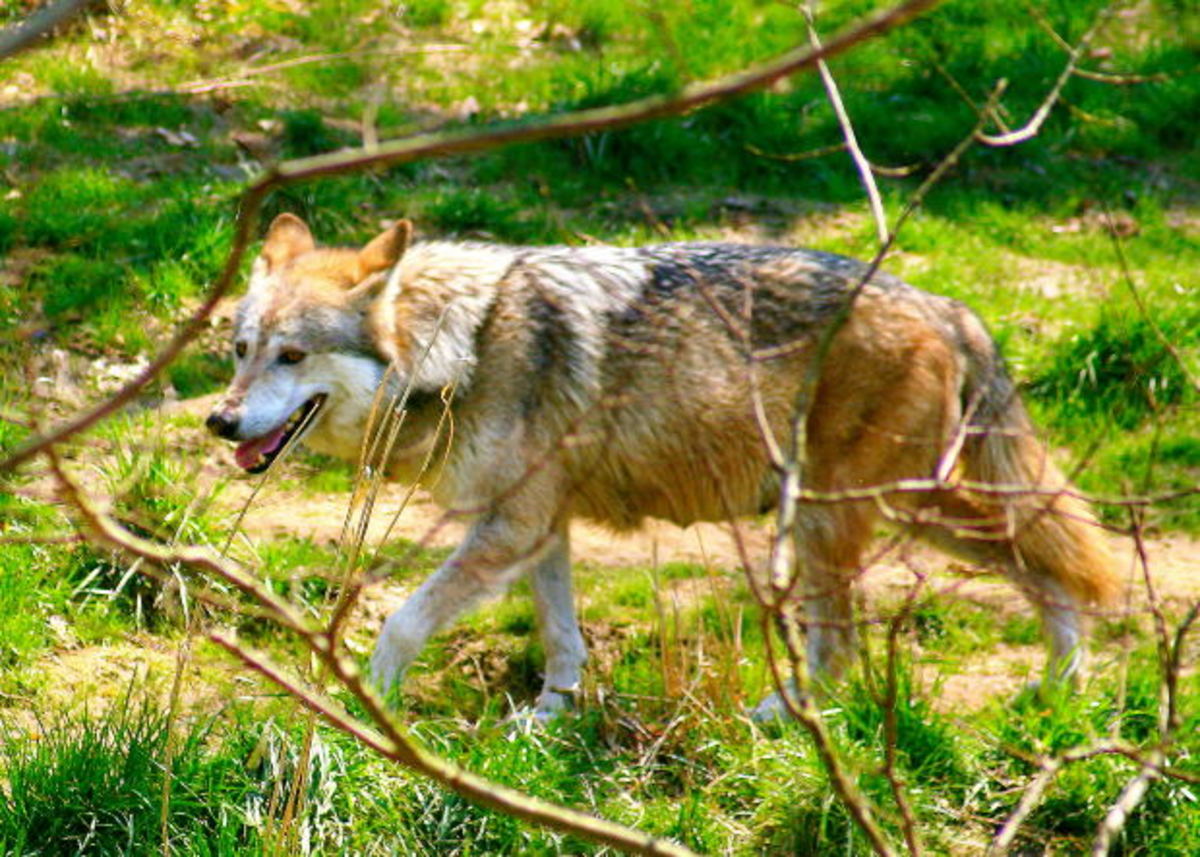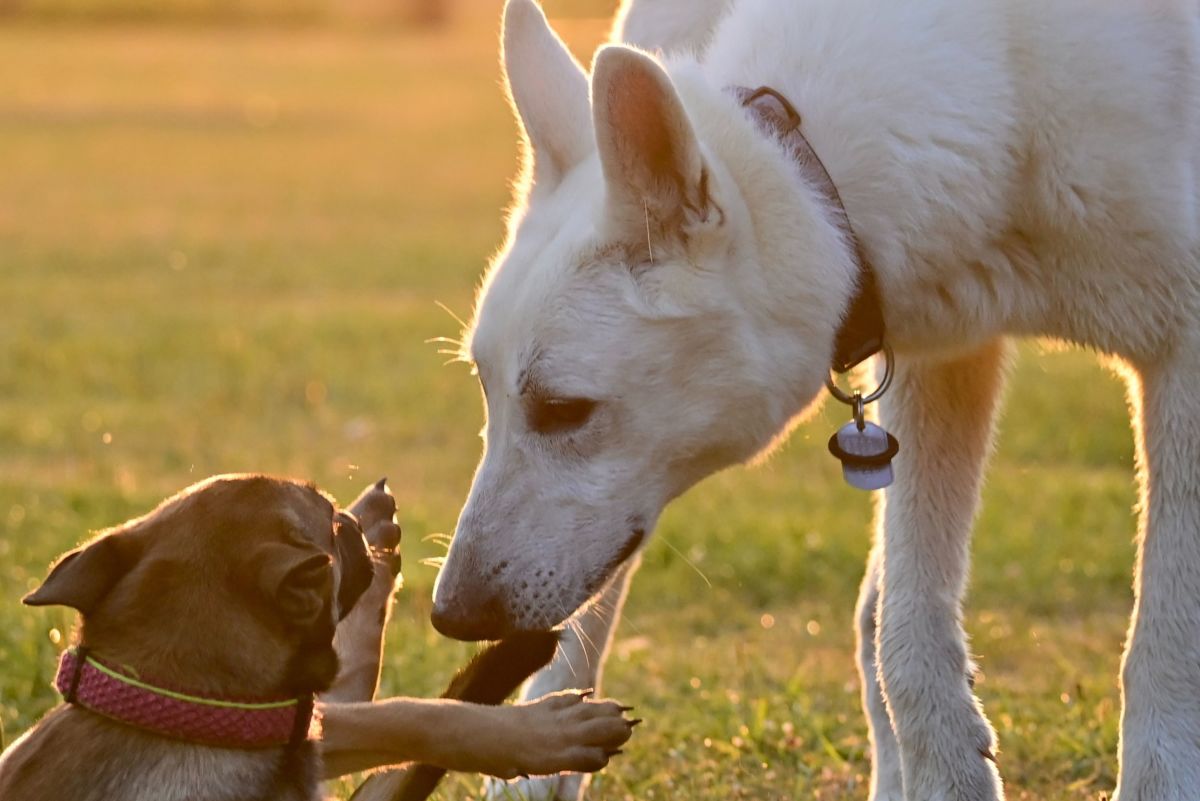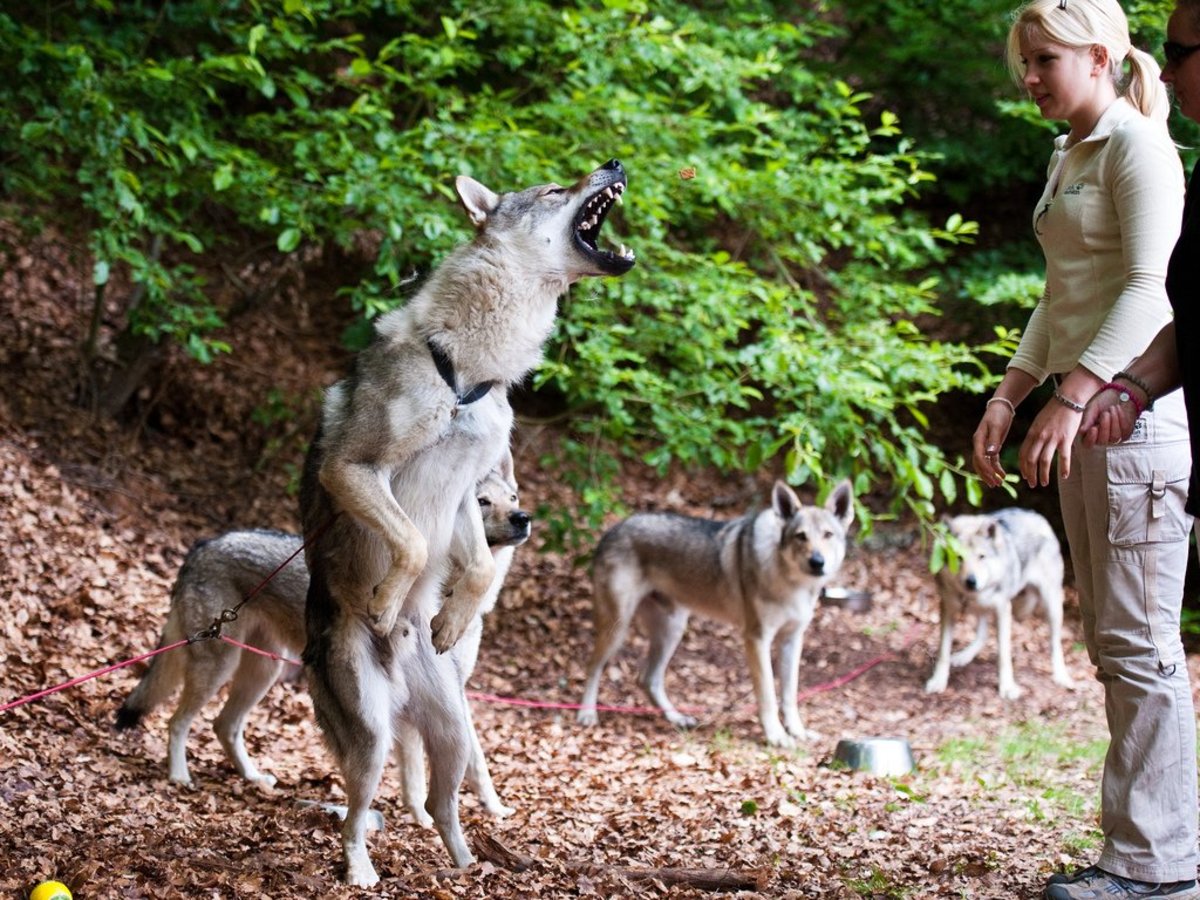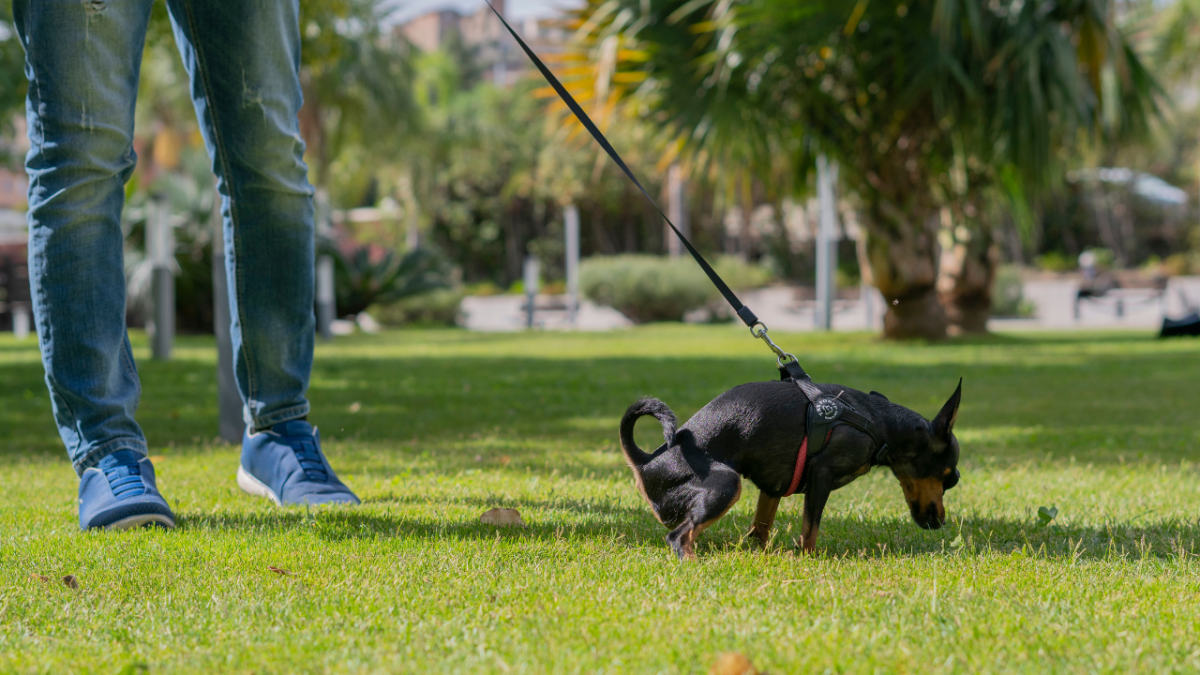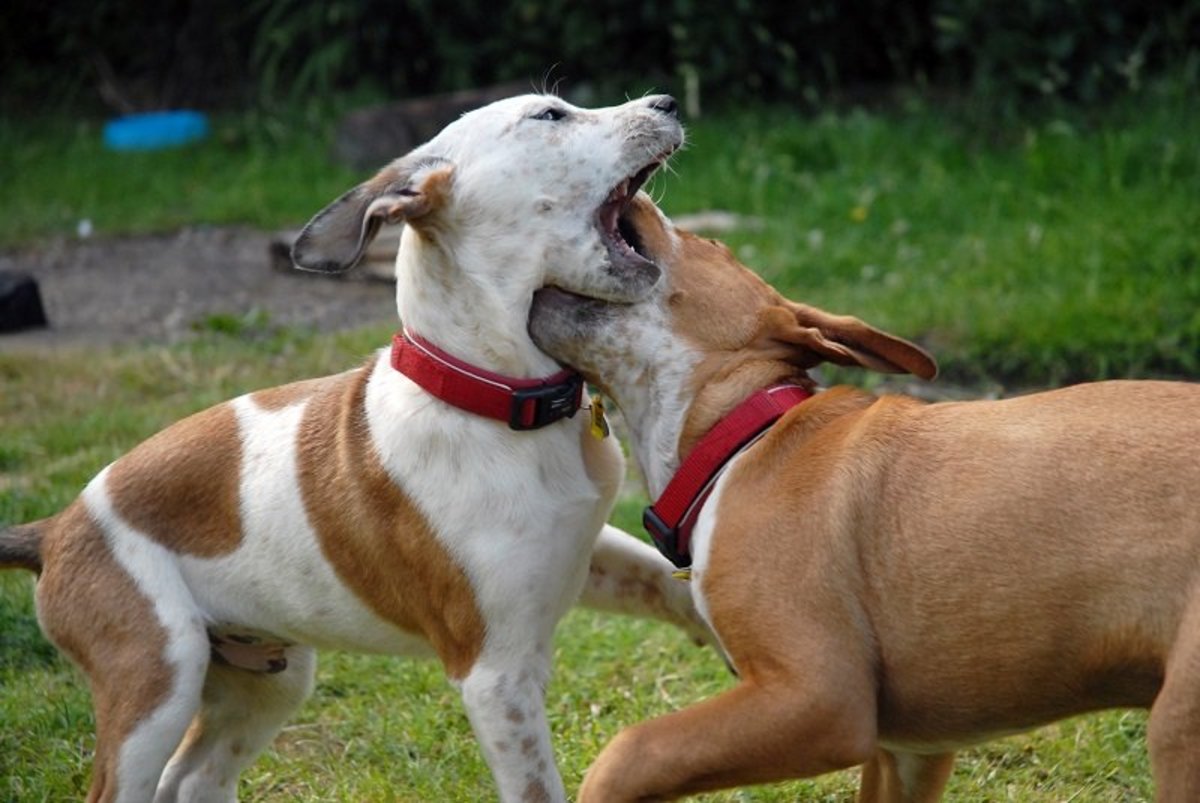Are Dogs Pack Animals?
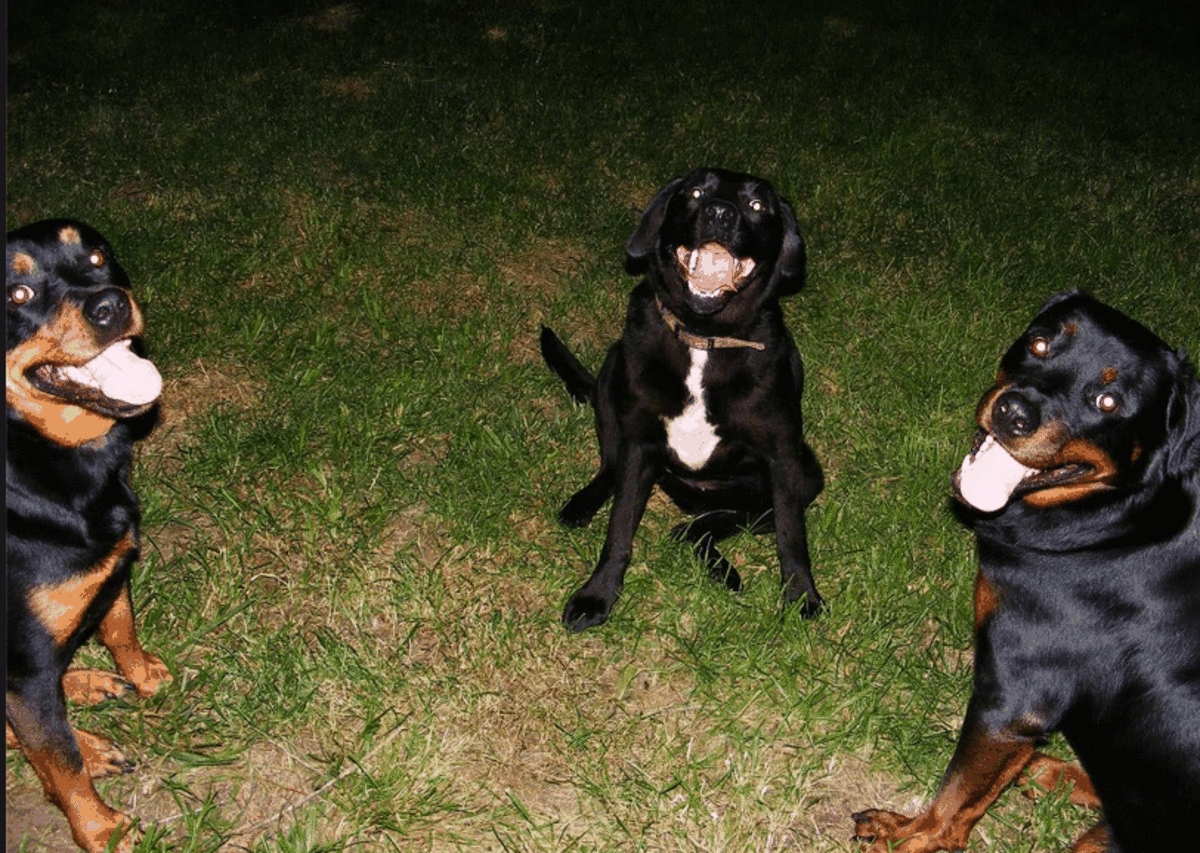
Are Dogs Pack Animals or Misunderstood Species?
We are often constantly reminded from time to time that dogs are pack animals; but how true is this? You may often hear "you have to be a pack leader to your dog" or "dogs are pack animals" all the way up to the alpha and social dominance lingo extrapolated by a famous Mexican guy who "whispers to dogs". Of all my hubs on dog training and behavior, I truly believe that this one is one of the most important and one that I really feel strong about when it comes to improving the dog and owner relationship.
When it comes to dogs, there appears to be a lot of confusion on this topic with little agreement on their real social organization. In order to get a straight answer it helps to first define exactly what a pack is and how it is formed. In loose terms, a pack is group of canids of the same species. The purpose of forming such packs is usually so pack members can collaborate in hunting and taking down animals that can be many times bigger their size.
Debunking the Alpha term by David Mech
The First Wolf Pack Studies
The first studies of wolf packs were conducted by animal behaviorist Robert Shenkel in 1947 at the Zoological Institute of the university of Basel in Switzerland. His observations on wolves in captivity concluded that the wolf pack was led by an authoritarian figure known as the "alpha wolf". Conventional dog wisdom was deduced from these captive wolf studies leading to the belief that the best way to earn respect from a dog was to become an authoritarian figure and force the dog into submission, just as the alpha wolf. This led to an era of dominance-based training methods where alpha rolls, leash pops, "yank and crank training" and wolf-like corrections were overused along with coercitive training tools such as choke collars and prongs .
Further studies on wolf packs were fortunately conducted by the American biologist and wolf behavior expert, David Mech. His studies started in 1986 and continues for 13 summers on Ellesmere Island, in North-West Canada. Unlike Shenkels' studies which were conducted in captivity, David Mechs' were conducted with free ranging wolves.
David Mech's observation concluded that in the pack there was no single authoritarian "alpha wolf" as Shenkel suggested, but rather, the pack was led by an "alpha couple" comprised by a male and female wolf. David Mech's revolutionary studies paved the path to kinder training methods since the pack in the wild no longer appeared to be hierarchical, but rather, closely resembled a family structure simply comprising a breeding pair and their offspring. You can read more of David Mech's studies by reading this hub" David Mech's Theory on the Alpha Role.
Types of Pack Organizations
To better understand social pack organizations in canines it helps to look at how other species organize and the types of social structures in the animal world. It is quite interesting to learn that the whole term "pecking order" used to depict the social dominance hierarchy started with chickens! Indeed, in 1921, Thorleif Schjelderup-Ebb studied how a social dominance hierarchy was formed in chickens and the term "pecking order" derives from the thought that dominance in chickens was based on "who pecked who". Following are some types of hierarchy observed in social groups of animals.
- Linear Dominance Hierachy
In this structure, social order is maintained by "dominant" displays towards those lower in rank. This is the structure observed in a small groups of chicken placed in a small area where they will compete over resources. In this structure, the maximum degree is one. In other words, a member has one subordinate and one superior and the outcome of who is over who is well known. For instance, you may have a linear hierarchy like this:
- Molly
- Blackie
- Mindy
- Cindy
In this context, you know that Mindy is superior to Cindy but inferior to Blackie, and Blackie is superior to Mindy but inferior to Molly and so forth. Interestingly, these interactions may change if these chickens are removed and re-introduced weeks later. This is also the type of hierarchy, Shenkel described in his studies on wolves in captivity. The alpha always wins the fights over anyone, while the beta loses fights with the alpha but wins over all others and so forth. The wolf at the bottom of the pack that loses with all is known as the "omega".
- Linear Subordinance Hierarchy
In this settings, the opposite of the Linear Dominance Hierarchy happens. In other words, the hierarchy structure is basically the same, but instead of social order being maintained by "dominant" displays towards those lower in rank, social order is maintained by "submissive" displays towards those higher in rank. You may a social structure as this:
- Molly
- Blackie
- Mindy
- Cindy
In this case, Mindy acknowledges Blackie is superior so she defers to her, while Blackie acknowledges Molly is superior so she defers to her and so forth. In other words, it is through acts of appeasement from the inferiors that social order is delineated rather than acts of dominance from the superiors.
This theory was first suggested by English primatologist Dr. Thelma Rowell after observing the social behaviors in monkeys. In her words, quoted "maintenance of an existing hierarchy depends on the underlings respect of the position of higher-ranking individuals. The status quo is maintained because, lower-ranking individuals seldom challenge authority and so only occasionally, is there need to enforce higher rank with a display of physical, or more likely, psychological dominance." Respected veterinarian, animal behaviorist, and dog trainer, Ian Dunbar, further claims that ''subordinance hierarchy'' is a more descriptive term for canine social structure".
*Note: there are several other theories/observations/hypothesis deduced from studies and observations and this is where things get murky. It is easy to feel overwhelmed by the amount of theories and it seems to be arduous to find an agreement on what types of social orders are the real ones occurring in dogs.
- Age Graded Dominance Hierarchy
This model is presented in David Mech's book, "Wolves: Behavior, Ecology, and Conservation" . Basically, upon observing the interactions of young puppies and adults, it was visible how juvenile wolves were much humble towards the older wolves and how the older wolves intimidated the younger specimens.
- Non-Transitive Hierarchy
In this structure, between any two members there is a fixed relationship. A is over B, B is over C, and C is over A. These two member units are referred to in sociology as "dyads"; these are the smallest social groups.
- Female Dominance
In some species of animals, the females are by default in charge. This type of social hierarchy is observer consistently in hyenas and lemurs.When it comes to access to food and sleeping areas, the males are submissive to the females.
- Contextual Dominance
In this structure, dominance displays are based on what is at stake. In a household dog pack, you may have Rover over Molly when it comes to who gets a toy first, but them Molly is over Rover when it comes to who gets outside the door first, and finally, Skipper is over everyone when it comes to getting attention from the owner first.
- Triangular Character Trait Dominance
This hierarchy is triangular in structure, meaning that at the very top there is the alpha, in the middle are the middle rank alpha type wannabees who tend to fight a lot, and at the bottom are the beta types that are not interested in the top position. When the alpha is present, as a CEO he gets access to resources, but when he is not, the alpha type wannabees take over just as middle managers.
*Note; to make things even murkier, there are often role reversals and status changes in social groups where an animal due to health or other reasons may back down for some time and then regain social status at a later time.
Understand What Dominance Is Before Labelling Your Dog
Hierarchy of Domestic Dogs With Humans
If you have survived the confusion and made it reading so far, you may be interested in how dogs relate with humans and what type of hierarchy is formed within a "dog and human pack". The best way to determine this is by taking a look at what the pros have to say about this.
As mentioned, you may have heard on popular television shows that you must be the "chest thumping" big alpha over your dog or your dog will take over the house and make you sleep on the couch. You may have heard that your dog is dominant over you if he jumps on you, pulls on the leash or begs at the table. Let's clarify a few of these concepts.
First of all, dominance is not a personality trait, as previously believed but rather it is "primarily a descriptive term for relationships between pairs of individuals" according to Association of Pet Dog Trainers. Also, the use of the expression 'dominant dog' is meaningless, since "dominance" can apply only to a relationship between individuals."Bradshaw et al., 2009.
Second, dogs are most likely not acting dominant when they are behaving in certain ways. Rather, as opportunistic beings with a past as scavengers, they are simply engaging in behaviors that are rewarding. According to the American Veterinary Society of Animal Behavior unwanted "behaviors occur because they have been inadvertently rewarded and because alternate appropriate behaviors have not been trained instead". "Rover pulls on the leash? Is he dominant? No! he is simply trying to get to sniff that interesting tree. Bandit jumps? Is he dominant? No way! He is only trying to say hello as he did since he was puppy, remember? Molly begs at the table? Is she dominant? Heck no! She is simply begging because you gave in several times and she has learned that begging is rewarding. And so forth. For an interesting table on behaviors that have been erroneously mislabeled as dominant in the past see the APDT'S table " Dominance Myths and Training Realities.
Third, dogs are not wolves just as humans are not chimpanzees. It is wrong to think dogs are wolves. Despite they share the same chromosomes arranged in 39 pairs and can be crossbred, years and years of domestication separate the two. Using the wolf model to train dogs, is useless and even harmful. The American Veterinary Society of Animal Behavior clearly recommends that vets "avoid referring clients to trainers or behavior consultants who advocate dominance hierarchy theory and the subsequent confrontational training that follows from it".
And fourth, humans are not dogs and dogs know it, so it is useless to "mimic a bite" by pinching the dog's skin, performing an alpha roll to put the dog into place or using a prong collar to give a correction "similar to the collar scruff mother dogs give to pups". Respected dog trainer Pat Miller in the Whole Dog Journal, claims "It’s about time we gave up trying to be dogs in a dog pack and accepted that we are humans co-existing with another species – and that we’re most successful doing so when we co-exist peacefully."
Dominant Dog Using your Credit Card and Spending?
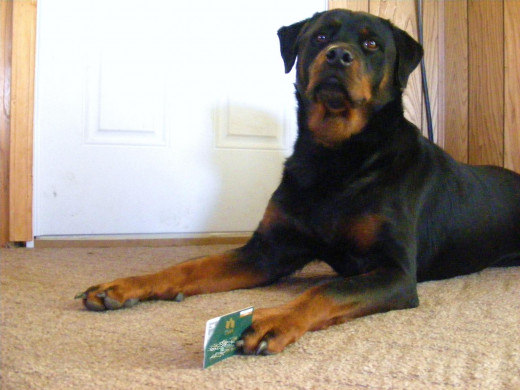
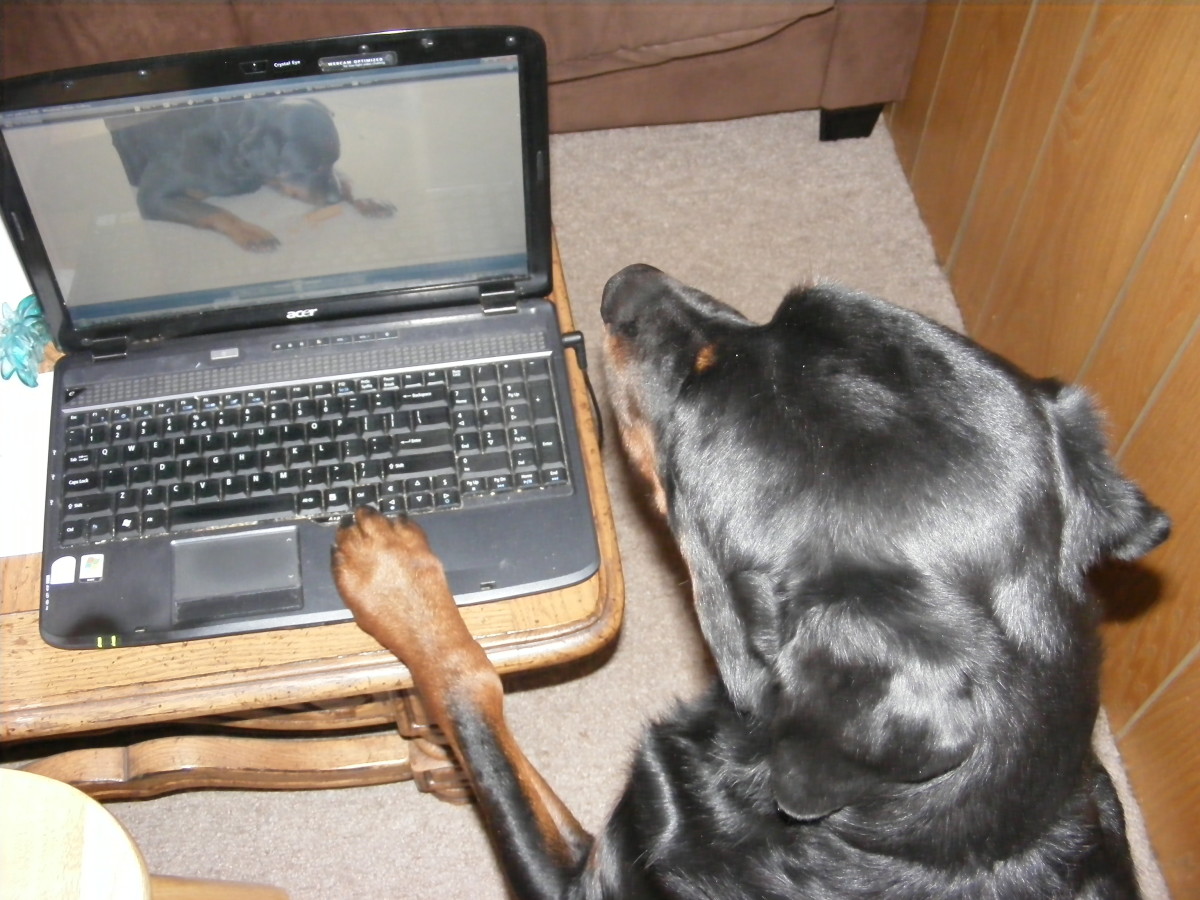
Hierarchy of Dogs With Dogs
After seeing how dogs relate to humans and how humans should relate to dogs, it helps to take a peek on how dogs relate to one another. The term "pack" to depict a group of dogs is not ideal; it is best to refer to them as a "social group". There are different theories among how dogs related to each other in social groups. Let's take a look at what the pros have to say about this.
According to Pat Miller, "social hierarchies do exist in groups of domesticated dogs and hierarchy can be fluid. One dog may be more assertive in one encounter, and more deferent in the next, depending on what’s at stake, and how strongly each dog feels about the outcome." This brings back to the contextual theory talked about previously.
Dr, Sophia Yin appears to confirm this theory, in her article "Dominance VS. Unruly Behavior she claims "With many of our household pets, including dogs and cats, dominance-submissive relationships between individuals may exist. But hierarchies are not necessarily linear, individuals can share similar ranks and clear hierarchies may not always exist."
With free ranging dogs, it appears that they occasionally form social groups when there is a female in heat or a food source, but once the female has mated or the food source exhausted, the dogs go back to their own lives. In Romania, when dogs where involuntarily turned off to the streets during the tenure of dictator Nicolae Ceaucescu, they did not form packs, rather they interacted with each other briefly and hung out temporarily. Other free-ranging population of dogs in sub-Saharan Africa, South America, India, Mexico,Hawaii and Bangkok followed similar associations. None formed pack structures as observed in wolves, according to dog trainer Jean Donaldson.
So do dogs need a pack leader? With really no pack, it all boils down to understanding what it really means to be a leader and take a glance at semantics and its subtleties. The latest seems to suggest that dogs definitely need someone who can provide gentle guidance, explain how the world works and how to gain access to resources. As humans equipped with opposable thumbs and access to resources, dogs see us already as superior; it is up to us to train them which behaviors are acceptable and reinforce them so we can build a strong bond based on trust and gentle guidance.
Alexadry © Do not copy.All Rights Reserved
Don't be fooled by the dominance lingo aired on tv shows!

For further reading
- Dog Behavior: How has Dog Behavior Evolved from Wolv...
Learn how dogs evolved from wolves. Theories of how dogs were domesticated and what behaviors wolves and dogs have in common. - Dog Dominance: Myth or Truth?
Dominance is often a misunderstood, yet, overused word. It is just too easy to watch a dog and label it as ''dominant'' upon observing its behavior. It is almost as if a dog can be either ''dominant'' or ''submissive'' with no shades in between.... - How to Train Dogs "Nothing in Life is Free", "Say ...
Nothing in life is free is a great training program for your dog! Wondering how to calm down your pooch? Is your dog misbehaving? Need more control? Take your time to invest in the Say Please training program and reap the rewards of positive reinforc - Differences and Similarities Between Dogs and Wolves
wolves and dog similarities, jak, morguefile.com Dog and wolf: two different species but yet, so much in common. Dogs were originally classified as ''Canis familiaris '' by Linnaeus in 1758. However, later in 1993, dogs were reclassified as a... - David Mech's Theory on the Alpha Role
Extensive research on the topic of wolf hierarchy was conducted by the American biologist David Mech. Learn how he revolutionized the way dogs are treated today.
